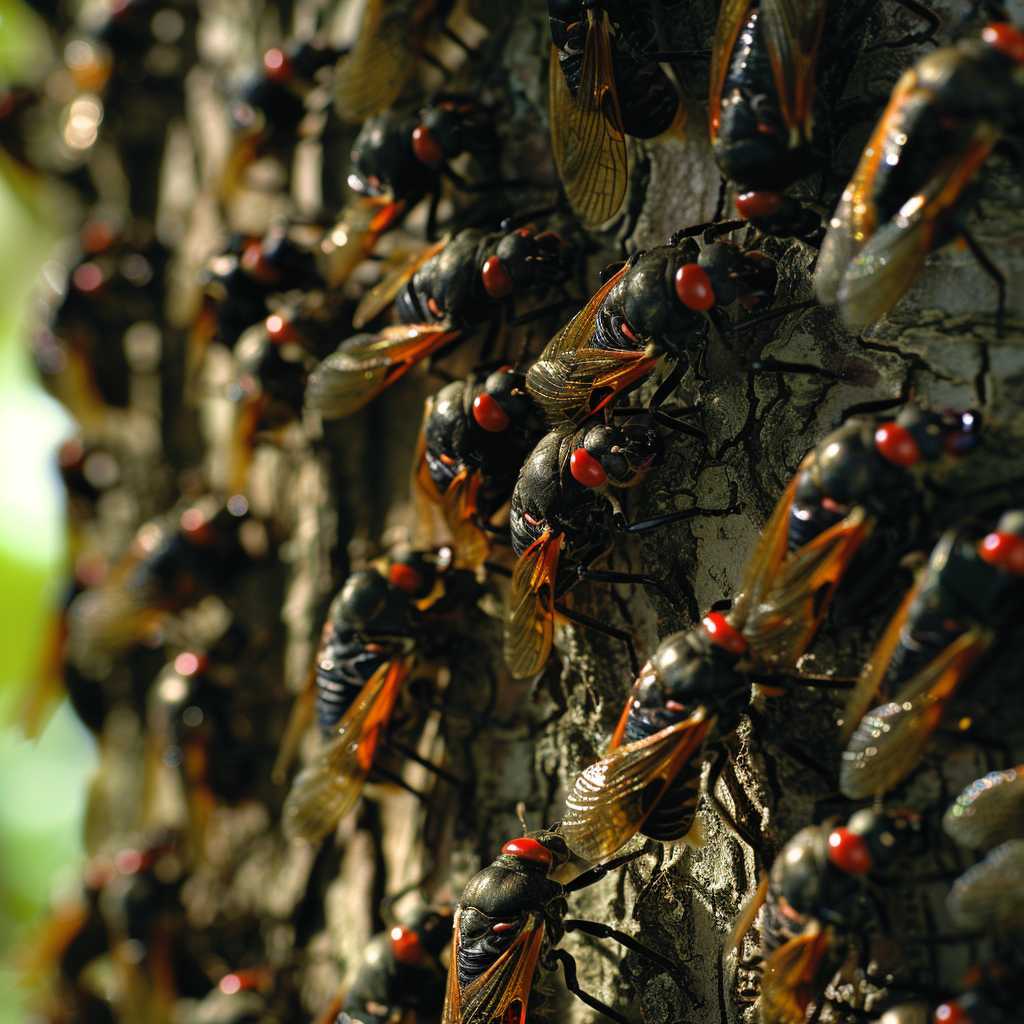The Phenomenon of Periodical Cicada Emergence: An In-Depth Exploration
Cicadas are fascinating insects that are known for their unique life cycles, particularly those of the periodical variety in the genus Magicicada. These creatures live underground for most of their lives, only to emerge en masse at predetermined intervals for a brief and noisy culmination of their life’s journey. This article examines the lifecycle, significance, scientific interest, and cultural impact of periodical cicadas’ emergence.
Understanding the Lifecycle of Periodical Cicadas
Periodical cicadas have one of the most extraordinary life cycles in the insect world. Unlike their annual counterparts, which emerge every year, periodical cicadas spend the majority of their lives in a nymph stage underground, extending from 13 to 17 years, depending on the species. Their extended subterranean childhood is spent slowly feeding on fluids from tree roots until they are ready to emerge.
Each brood of periodical cicadas is classified by a specific number and a year in which they are due to arise from the ground. When the soil reaches a consistent temperature, typically around 64 degrees Fahrenheit, the nymphs begin their ascent.
The Science Behind Mass Emergence
Scientists are particularly interested in how and why periodical cicadas emerge synchronously across vast areas. The working hypothesis suggests this behavior provides survival advantages through predator satiation; essentially, they emerge in such great numbers that predators can’t possibly consume them all, ensuring the survival of enough cicadas to mate and lay eggs for the next generation.
Researchers point to internal biological clocks synchronized by environmental cues as triggers for emergence. Studies into these patterns also provide valuable insight into climate change impacts, as fluctuations in emergence times and patterns could indicate broader environmental shifts.
Environmental Impact and Benefits
Cicada emergence has both positive and negative implications for the environment. They play a key role in nutrient cycling – their decomposition releases nutrients back into the soil. Holes created by emerging nymphs aerate the soil, which benefits plants. They also trim mature trees when laying eggs, which can stimulate new growth.
Conversely, periodical cicada emergence can harm young trees if egg-laying is particularly dense. As a precaution, experts suggest avoiding planting new trees the year before a brood is due to emerge.
Public Reaction and Cultural Significance
The loud mating calls of male cicadas define the weeks following their emergence and inspire mixed feelings among residents sharing the same area. For some homeowners, the noise associated with the emergence can be disruptive. Meanwhile, others celebrate cicada season with festivals and events that showcase these insects as natural marvels.
Throughout history, cicadas have held cultural significance in many societies symbolizing rebirth and immortality – fitting given their own remarkable lifecycle.
Economic Influence and Nutritional Aspects
Some regions experience economic impacts due to heightened public interest resulting in tourism. Additionally, there are occasional costs related to agricultural management and damage mitigation for young trees and nursery stocks during emergence periods.
In certain cultures, cicadas are not just an oddity but a delicacy. Studies of their nutritional value indicate they are a sustainable food source high in protein, making them subjects for discussion about alternative diets to meet human food requirements sustainably.
Considerations for Locals During Emergence Years
Residents in areas expecting an emergence should seek advice from local extension services on how to protect young trees and gardens. Misconceptions about these insects often lead to unnecessary pesticide use; however, cicadas pose no direct threat to people or pets and typically do not require any pest control measures.
The Broods: A National Phenomenon
While there are many broods of periodical cicadas scattered across different geographical regions, some recent emergences have caught national attention. Brood X is one such brood renowned for its 17-year cycle and widespread presence across several U.S. states.
Notes
*Image description:*
A close-up photograph showcases dozens of adult periodical cicadas clinging to tree bark shortly after emerging from the ground. Their red eyes are evident against their black bodies and transparent wings with orange veins shine in natural sunlight as they begin their short-lived adult stage of life aboveground.

